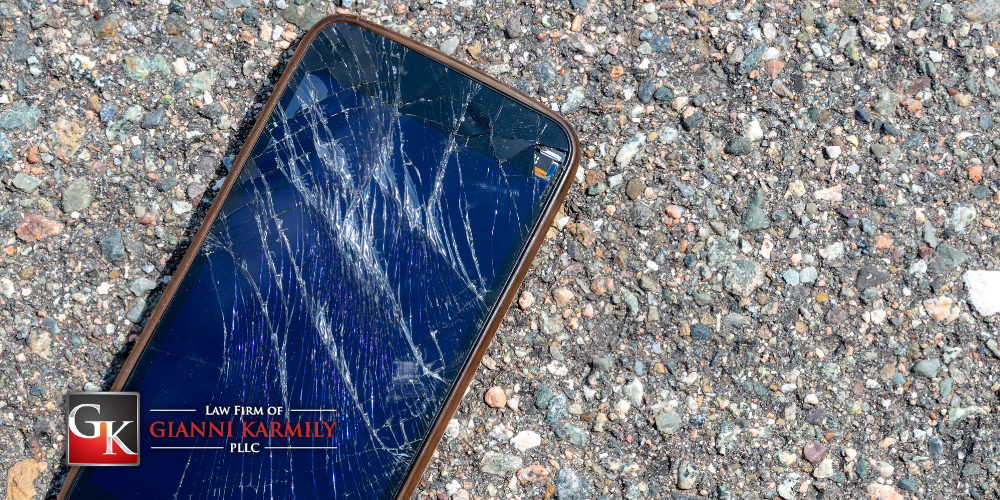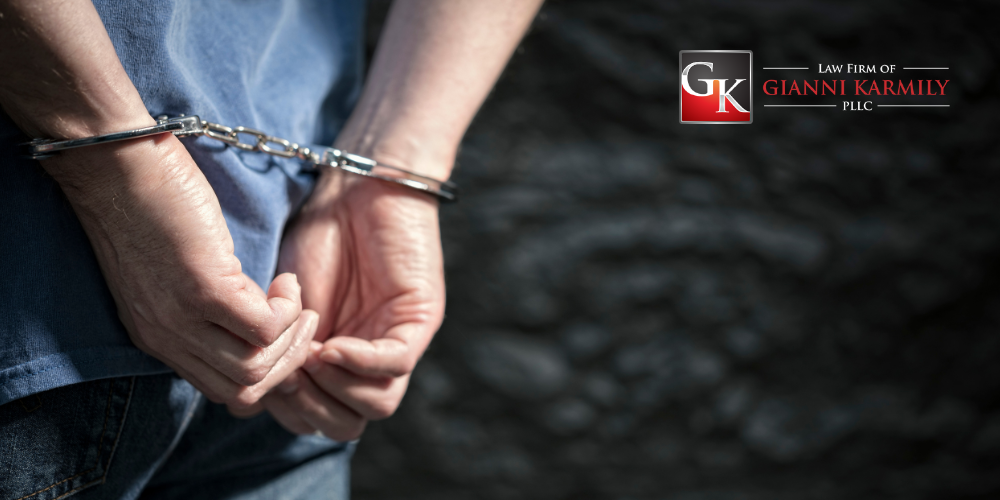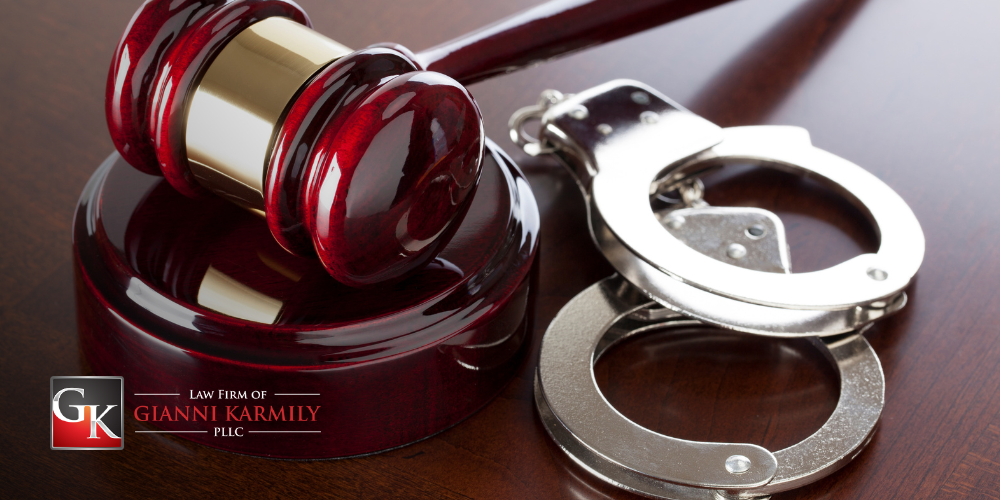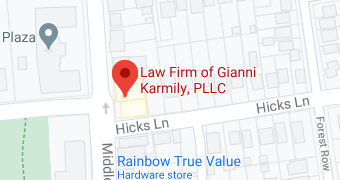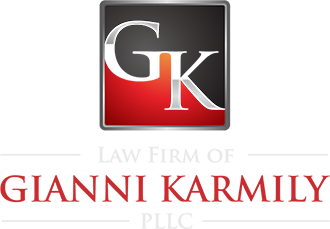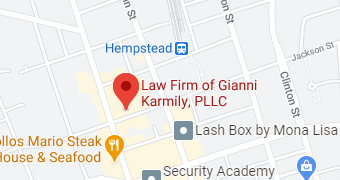Nassau County, Long Island Criminal Mischief Lawyer
Intentionally damaging another person’s property could result in criminal mischief charges, with punishments ranging in severity from a maximum of 364 days in jail for a misdemeanor conviction or up to 25 years in jail for a felony conviction. If you are facing criminal mischief charges in Nassau County, Long Island, you need a knowledgeable criminal defense attorney who can help you fight these charges.
Nassau County, Long Island criminal defense lawyer Gianni Karmily has handled a variety of criminal cases and can help protect you and your future from damage as a result of these charges. He will work closely with you to understand your situation, explain your legal options, and develop a personalized defense strategy tailored to your specific circumstances. Contact our Great Neck location at (516) 630-3405 or our Hempstead location at (516) 614-4228 to schedule an initial case evaluation with us regarding your criminal mischief case.
What is Criminal Mischief?
In New York, criminal mischief is the act of knowingly or intentionally damaging someone else’s property when they have no such right to do so. This includes any public or private property in which another person has ownership interest. Criminal mischief covers acts like vandalism, graffiti, breaking windows, or tampering with public utilities. New York Penal Law separates criminal mischief into four degrees, with first-degree criminal mischief being the most severe charge. The severity of the charge depends on the extent of the damage and the value of the property affected.
New York Criminal Mischief in the Fourth Degree
Someone commits criminal mischief in the fourth degree in New York if they:
- intentionally damage another person’s property worth two hundred fifty dollars (250 dollars) or less;
- Intentionally participates in the damage of an abandoned building (as defined in NY Real Property Actions & Proceedings law § 1971);
- Recklessly damage another person’s property with damages exceeding two hundred fifty dollars (250 dollars); or
- Intentionally disables or removes a person’s phone or other communication device to prevent them from seeking emergency assistance.
Criminal mischief in the fourth degree is a class A misdemeanor.
New York Criminal Mischief in the Third Degree
Someone commits criminal mischief in the third degree in New York if EITHER of the below are true:
- You damage another person’s motor vehicle while breaking into it with the intent of stealing property, and you have been convicted of criminal mischief for three or more separate criminal transactions within the previous ten-year period.
- You cause damages worth more than two hundred fifty dollars (250 dollars) to someone else’s property.
New York Criminal Mischief In The Second Degree
Someone can be accused of committing criminal mischief in the second degree if they intentionally cause damage to another person’s property, with damages exceeding one thousand five hundred dollars (1,500 dollars). Due to the severity of the property damage associated with this offense, criminal mischief in the second degree is a class D felony.
New York Criminal Mischief In The First Degree
In New York, someone can be charged with criminal mischief in the first degree if they intentionally damage another person’s property through the use of an explosive. Criminal mischief in the first degree is punishable as a class B felony.
Penalties for a Criminal Mischief Conviction in New York
Under NY Penal Law, the punishments for criminal mischief depend on the circumstances of the offense. For example, if a person is guilty of criminal mischief in the fourth degree, they will face much less severe punishments than they would if they were found guilty of criminal mischief in the first degree. Below are the punishments for various acts of criminal mischief.
Misdemeanor vs. Felony Charges for Criminal Mischief
The difference between misdemeanor criminal mischief and felony criminal mischief is the circumstances surrounding the alleged offense, the extent of the damages, and the alleged offender’s general prior history and prior history of criminal mischief. For example, if the act resulted in two hundred fifty dollars (250 dollars) worth of damages or less, then they may be charged with misdemeanor criminal mischief.
Fourth-degree criminal mischief is a class A misdemeanor, and the punishments for a class A misdemeanor in New York include up to 364 days in jail, up to one thousand dollars (1,000 dollars) in fines, and/or two to three years of probation. Misdemeanor convictions result in lesser punishments and do not carry the same additional consequences that felony convictions hold. Being convicted of a felony could affect an offender’s right or ability to vote, own firearms, gain employment, or find housing, among other consequences.
Penalties for a Class E Felony
In New York State, third-degree criminal mischief is a class E felony, punishable by up to 4 years in jail, up to five thousand dollars (5,000 dollars) in fines, or both.
Penalties for a Class D Felony
Second-degree criminal mischief is a class D felony, which is punishable by up to 7 years in jail, up to five thousand dollars (5,000 dollars) in fines, or both.
Penalties for a Class B Felony
First-degree criminal mischief, which is the most severe criminal mischief charge, is a class B felony, punishable by up to 25 years in jail, up to five thousand dollars (5,000 dollars) in fines, or both.
Criminal Mischief Examples
In New York State, there are a number of acts that can qualify as criminal mischief or another related crime. Some of the most common examples of criminal mischief in New York include:
- Breaking windows on another person’s property or abandoned property;
- Spray painting graffiti on another person’s property or abandoned property;
- Breaking another person’s phone or other belongings;
- Damaging another person’s car in order to break into it; or
- Setting fire to another person’s property or abandoned property.
Below are some of the most common acts of criminal mischief that we see in Nassau County, Long Island, as well as examples of what these acts could look like.
Damage to the Property of Another Person
Most cases of criminal mischief that we handle involve acts of damage to another person’s property. This can occur when someone intentionally damages property belonging to another person, causing damages worth any amount of money. This can also occur when someone recklessly damages property belonging to another person worth more than two hundred fifty dollars (250 dollars).
In New York, examples of criminal mischief involving damage to the property of another person include:
- Breaking someone’s phone in an argument;
- Keying someone’s car;
- Egging someone’s home or car;
- Breaking someone’s window intentionally;
- Slashing someone’s tires;
- Setting fire to someone’s property; or
- Using explosives to damage someone’s property.
Criminal Tampering
Criminal tampering involves unlawfully altering or interfering with property, often with the intent to cause significant inconvenience to another person or to commit another crime against them. This can include:
- Tampering with equipment like wires or security systems;
- Tampering with public water works; or
- Tapping into a gas line without permission.
Preventing or Intending to Prevent a Person From Seeking Emergency Assistance
Preventing or intending to prevent a person from seeking emergency assistance can also constitute criminal mischief. This can include preventing a person from contacting police, law enforcement, fire, or emergency medical services personnel. Examples of this include:
- Blocking access to a phone or similar communication-sending equipment;
- Blocking an emergency exit; or
- Damaging a phone line or other communication device while someone is contacting emergency services.
Cemetery Desecration
Cemetery desecration involves vandalizing or disrespecting burial grounds, gravesites, or memorials, as well as stealing property from a grave or other burial site. In New York, someone can be charged with aggravated cemetery desecration if they open a crypt, casket, or other vessel containing a human body in order to steal property from within the vessel.
Examples of cemetery desecration in New York include:
- Spray painting a headstone or crypt;
- Damaging a headstone;
- Opening a casket and stealing jewelry; or
- Stealing items placed around a headstone.
Reckless Endangerment of Property
Reckless endangerment of property involves engaging in actions that put property at risk of damage or destruction due to disregard for safety. In New York, the value of the property must exceed two hundred fifty dollars (250 dollars). This can include:
- Borrowing someone’s car and driving at excessive speeds; or
- Starting a fire without proper precautions.
Unlawfully Posting Advertisements
In New York, unlawfully posting advertisements involves placing promotional materials, such as flyers or posters, in prohibited areas or without permission. This can include acts such as:
- Placing promotional material on buildings without permission;
- Attaching fliers to utility poles; or
- Painting an advertisement on someone else’s property.
Tampering with a Consumer Product
Tampering with a consumer product involves altering or contaminating goods with the intent to cause harm or deception. This can include:
- Tampering with packaged food;
- Modifying a medication’s packaging label; or
- Contaminating a bottled drink with a harmful substance.
Littering on Railroad Tracks and Rights-of-Way
Littering on railroad tracks and rights-of-way involves discarding waste or debris onto railway property, including tracks, platforms, or adjacent areas. In New York, this can pose a danger to pedestrians, individuals on the train platform, train conductors, and train occupants. Examples of railroad littering include:
- Throwing trash onto the train tracks; or
- Leaving odorous waste on the train tracks.
Making Graffiti or Possession of Graffiti Instruments
In New York State, making graffiti entails unlawfully marking or defacing public or private property with spray-painted images, symbols, or words. Additionally, possessing graffiti instruments, such as spray paint cans or markers, with the intent to use them for vandalism is also considered a crime.
Making graffiti can not only damage property, but can also lead to a sense of community neglect. Examples of this crime include:
- Tagging a public building;
- Spray painting on an abandoned building;
- Spray painting on the outside of someone’s private property; or
- Spray painting the outside of a train car.
Criminal Possession of a Taximeter Accelerating Device
Criminal possession of a taximeter accelerating device involves unlawfully possessing or using devices designed to manipulate taximeters in vehicles, like taxis. These devices can fraudulently alter fare calculations, enabling drivers to overcharge passengers. Simply possessing this kind of device is a crime in New York State.
Domestic Violence and Criminal Mischief Charges in New York
Domestic violence and criminal mischief charges can arise from the same situation when an altercation between intimate partners escalates to property damage. For example, during a heated argument, one partner may intentionally damage household belongings, such as smashing electronic devices or breaking furniture.
If the altercation is deemed to be part of a pattern of domestic violence, then the alleged offender may face charges of criminal mischief as well as domestic violence. If you have been accused of acts of domestic violence, contact Nassau County, Long Island domestic violence attorney Gianni Karmily today regarding your case.
Defenses Against Criminal Mischief Charges in New York
There are a number of different defenses that can be used to defend against criminal mischief charges in New York State. Some of the most common defenses used in New York criminal mischief cases include:
- The alleged offender did not intend to damage the property;
- The alleged offender had consent from the owner to engage in the actions that allegedly caused the damage;
- The alleged offender had reasonable grounds to believe that they had permission to damage the property; or
- The alleged offender damaged the property because they were in danger of imminent physical injury, or another person was in danger of imminent physical injury.
It’s important to note that the effectiveness of these defenses depends on the specific circumstances of each case and the quality of an individual’s legal representation.
How a Nassau County, Long Island Criminal Defense Lawyer Can Help With Criminal Mischief Charges
If you are facing charges of criminal mischief in Nassau County, Long Island, you need a trusted criminal mischief defense attorney like Gianni Karmily on your side. He will investigate the circumstances of your alleged offense, gather necessary evidence, and build a strong defense on your behalf that is tailored to your specific situation.
We understand how serious the consequences of criminal mischief charges can be, which is why we offer steadfast legal representation to each client we take on. We will negotiate with prosecutors for a favorable plea deal or to have your charges dismissed. If we are unable to accomplish that, then we will fight on your behalf in your court through hearings and trial, protecting your future and criminal record.
At the Law Firm of Gianni Karmily, we are proud to serve clients throughout Nassau County, Long Island. Call our Great Neck office at (516) 630-3405 or our Hempstead office at (516) 614-4228 to schedule a confidential case evaluation with Attorney Karmily today.



